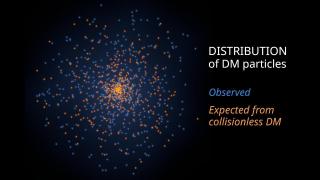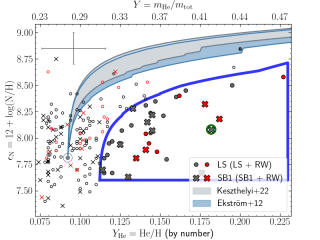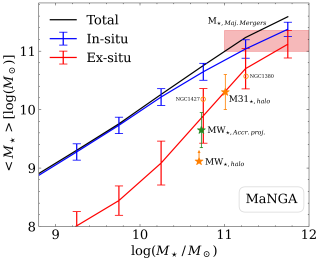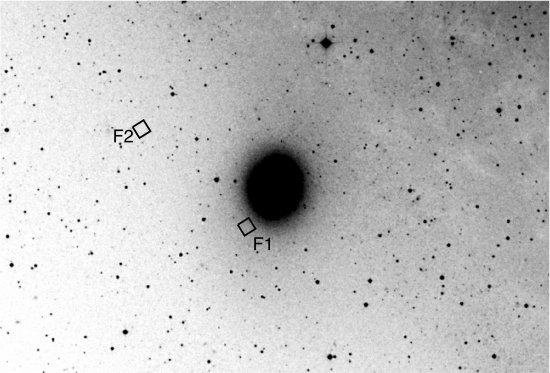We use deep Hubble Space Telescope Advanced Camera for Surveys/High Resolution Channel observations of a field within M32 (F1) and an M31 background field (F2) to determine the star formation history (SFH) of M32 from its resolved stellar population. We find that 2-5 Gyr old stars contribute ~40% ± 17% of M32's mass, while ~55% ± 21% of M32's mass comes from stars older than 5 Gyr. The SFH additionally indicates the presence of young (<2 Gyr old), metal-poor ([M/H] ~ –0.7) stars, suggesting that blue straggler stars contribute ~2% of the mass at F1; the remaining ~3% of the mass is in young metal-rich stars. The inferred SFH of the M31 background field F2 reveals that the majority of its stars are old, with ~95% of its mass already acquired 5-14 Gyr ago. It is composed of two dominant populations; ~30% ± 7.5% of its mass is in a 5-8 Gyr old population, and ~65% ± 9% of the mass is in an 8-14 Gyr old population. Our results suggest that the inner disk and spheroid populations of M31 are indistinguishable from those of the outer disk and spheroid. Assuming the mean age of M31's disk at F2 (~1 disk scale length) to be ~5-9 Gyr, our results agree with an inside-out disk formation scenario for M31's disk.
Advertised on
References
It may interest you
-
 The existence of dark matter is probably one of the fundamental mysteries of modern science and unraveling its nature has become one of the primary goals of modern Physics. Despite representing 85% of all matter in the Universe, we do not know what it is. In its simplest description, it is made up of particles that interact with each other and with ordinary matter only through gravity. However, this description does not correspond to any physical model. Finding out what dark matter is requires finding evidence of some kind of interaction of dark matter that goes beyond gravity. In our workAdvertised on
The existence of dark matter is probably one of the fundamental mysteries of modern science and unraveling its nature has become one of the primary goals of modern Physics. Despite representing 85% of all matter in the Universe, we do not know what it is. In its simplest description, it is made up of particles that interact with each other and with ordinary matter only through gravity. However, this description does not correspond to any physical model. Finding out what dark matter is requires finding evidence of some kind of interaction of dark matter that goes beyond gravity. In our workAdvertised on -
 There is increasing evidence that single-star evolutionary models are unable to reproduce all of the observational properties of massive stars. Binary interaction has emerged as a key factor in the evolution of a significant fraction of massive stars. In this study, we investigate the helium (Y(He)) and nitrogen surface abundances in a comprehensive sample of 180 Galactic O-type stars with projected rotational velocities of ≤150 km/s. We found a subsample (~20% of the total, and ~80% of the stars with Y(He) ≥ 0.12) with a Y(He) and nitrogen abundance combined pattern that is unexplainable byAdvertised on
There is increasing evidence that single-star evolutionary models are unable to reproduce all of the observational properties of massive stars. Binary interaction has emerged as a key factor in the evolution of a significant fraction of massive stars. In this study, we investigate the helium (Y(He)) and nitrogen surface abundances in a comprehensive sample of 180 Galactic O-type stars with projected rotational velocities of ≤150 km/s. We found a subsample (~20% of the total, and ~80% of the stars with Y(He) ≥ 0.12) with a Y(He) and nitrogen abundance combined pattern that is unexplainable byAdvertised on -
 The hierarchical model of galaxy evolution suggests that mergers have a substantial impact on the intricate processes that drive stellar assembly within a galaxy. However, accurately measuring the contribution of accretion to a galaxy's total stellar mass and its balance with in situ star formation poses a persistent challenge, as it is neither directly observable nor easily inferred from observational properties. Using data from MaNGA, we present theory-motivated predictions for the fraction of stellar mass originating from mergers in a statistically significant sample of nearby galaxiesAdvertised on
The hierarchical model of galaxy evolution suggests that mergers have a substantial impact on the intricate processes that drive stellar assembly within a galaxy. However, accurately measuring the contribution of accretion to a galaxy's total stellar mass and its balance with in situ star formation poses a persistent challenge, as it is neither directly observable nor easily inferred from observational properties. Using data from MaNGA, we present theory-motivated predictions for the fraction of stellar mass originating from mergers in a statistically significant sample of nearby galaxiesAdvertised on
